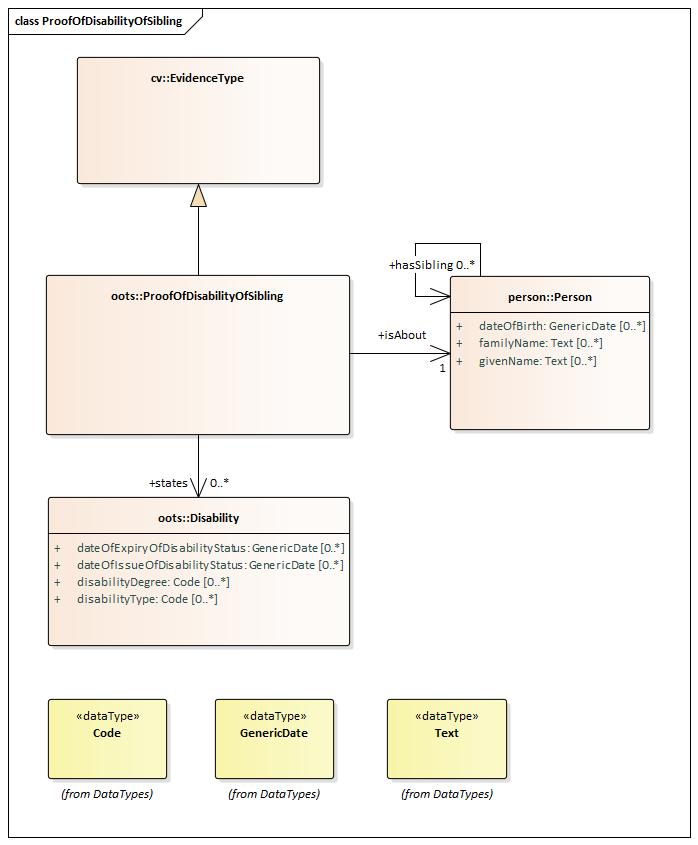Overview
This document describes the usage of the following main entities for a correct usage of the Application Profile:
|
Proof of disability of sibling |
The main entities are supported by:
|
Disability |
Evidence Type |
Person |
And supported by these datatypes:
| Code | GenericDate | Text |

![[o]](html/callout.png)